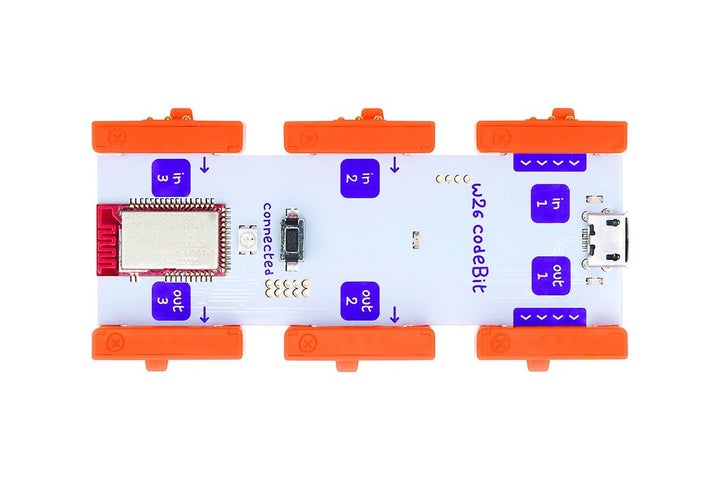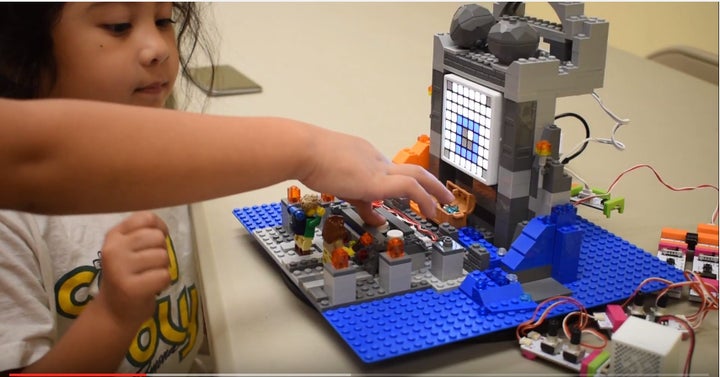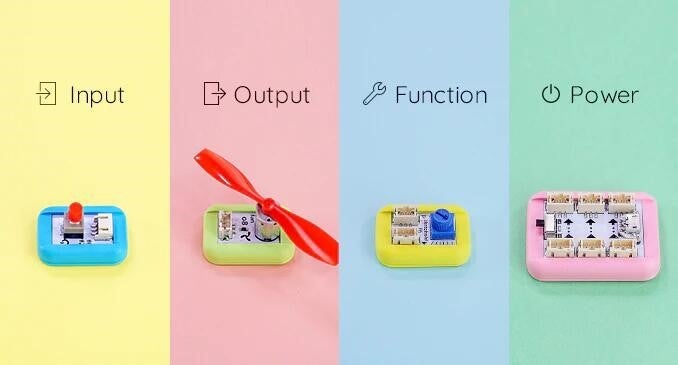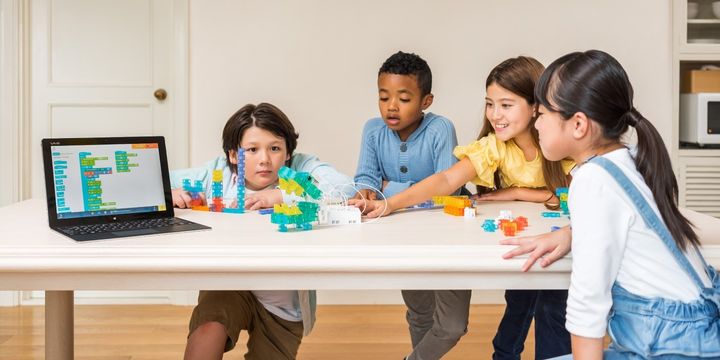Interesting building kits and coding tools for teaching kids about technology are pouring into the market. I’ve talked about the big differences in approaches. Some are more formulaic, with a “follow my steps” approach. Others are more open-ended. Some stress the building part of the process. Others stress learning to code.
But two things that they all have in common? First, there’s a real earnestness and care from the creators of products like these. The passion for building and creating shines through.
Second, they are all pricier than most parents are used to paying for “toys.” A large percentage of kids (and their parents) would rather pay for a $9.00 Fidget Spinner than pay $100+ for a smart electronics kit. Funny thing is that in other countries, Japan and China for example, tech mastery toys for kids are selling briskly. So listen up: Parents need to think of these toys as an investment in the future -- and that future will belong to children who have some mastery of building, coding and critical thinking. If you’re reluctant to shell out big bucks before determining whether your kids will enjoy it, visit sites like CodeSpark Academy, a critically acclaimed place to learn the rubric of coding. There’s a 7-day free trial.
Here are three of the latest building/coding tools to cross my desk. Hopefully there’s one that speaks to you.
littleBits Gets Into Coding
littleBits energetic founder, Ayah Bdeir, has been creating inventive ways to teach kids to love engineering and building things since before it was fashionable. The latest version of the company’s work, CodeKit, takes the next leap from pure building things and adds coding. You combine physical electronics components that magnetically snap together to design imaginative machines. Once your creation is complete you can program it to perform in endless ways.
The “bits” of electronics include power supplies, modular circuits, sensors, triggers, microphones and other input devices. The two most novel components in the new kit are a codeBit (for programming your contraption) and an LED matrix for creating programmable displays into your creation. Tutorials provide step-by-step instructions to create four programmable games: Tug-of-War, Ultimate Shootout, Hot Potato and Rockstar Guitar. But you are welcome to dream up others.

The coding language is similar to Google’s Blockly language where you can use visual snippets of code to teach your creation to walk, make noise, trigger an action, whatever. The tutorials emphasize how to use real-world art materials to personalize your creations (we like that a lot). You can see one child’s creation complete with the LED board in the photo.

My wonderful assistant, Rachel Dunphy, assembled her 3rd-8th grade relatives to test age appropriateness. The 8-year-old fared better than the 6-year-old who had trouble connecting the thin wire controllers from bit to bit. The 8-year-old was able to start grasping coding concepts like loops, conditional statements and variables after about 30 minutes of experimenting. However, because the creations are built with snappable magnetic parts and because the games involve throwing things at built-in-buttons and banging on things, kids will find their creations tend to topple while being played with. The final creations are a bit fragile.
At $300, Code Kit is a tad pricey but involves endless hours of exploration. It also has lesson plans for teachers in the classroom, making it an ideal addition to any classroom. Many after-school programs use it too. If you’re just starting to explore, you might want to start off with one of the littleBits non-coding packages first, especially since all littleBits kits have interchangeable parts.
Boson Looks A Lot Like littleBits, Costs Less

Boson from DFRobot, a Chinese maker of robotic parts, is the least well known, and the least flashy of the products. It’s just finishing its Kickstarter phase. Unlike the other sets that were beautifully packaged, it comes in a box of loose parts. But what it lacks in polish it makes up in cleverness and in price. Like litteBits, it has magnets that stick parts together instead of snap-together pieces like KOOV. Next, it uses a great system of color coding: blue is for inputs, green for outputs, yellow for functions and pink for power. Magnets and color coding make this the easiest program to get started. Like littleBits, you’re encouraged to use Boson with other materials like wood, paper, screws (they’ll screw into wood) or even your Legos. Boson is also less committed to requiring coding skills. The things you build will work fine without creating a single line of code, but you’ll have more play options if you do use the coding tools.
For its programming language, Boson includes the widely-used, MIT-developed Scratch, and even has an Intel Curie module for programming AI-type events. You don’t need to code to make fun projects like an IoT plant watering machine and a walking robot, but you can go beyond the basics with the included languages.
Boson is priced from $45 (makes 8 projects) and up, depending on the size of the kit you buy. But, even the Inventor Kit and Coding Kits are priced just north of $100. Where Boson seems to skimp most is in its fragile connector wires. If you want to dabble for $45 before moving into more expensive products, and you don’t need spit and polish trappings, Boson may be your winner.
Sony KOOV has Glitz and STEM Education
The message that STEM education is hot right now hasn’t been lost on Sony. And when Sony commits to doing something, they do it big. KOOV, their robotics and coding kit, is available for sale in China and Japan. In the U.S., it’s launching on Indiegogo. Sony has even formed a division in the company to support the product.
Billed as a combination robotics and coding kit, KOOV definitely takes its cue from Lego Boost, which begins shipping in August. The set is a combination of colorful (non-Lego colored) geometric shaped blocks that snap together very much like Lego pieces. Each block has an array of square holes on each surface and a square peg sticking out of one corner, making them less intuitive than Legos and less forgiving in the ease with which they can be taken together or pulled apart, but the smooth finished result is great.

The visual coding program that comes with the blocks shows off Sony’s sense of play and entertainment. Blocks of visual programming code (similar to the other user interfaces, but more playful) let you easily animate your block creations. They open and close their mouths, dance around, wave their arms and more. There are 30 hours of tutorials built into the program. You can follow the directions to build some fabulous looking robots that can do some limited but fun things. Beauty (Sony’s blocks) and brains (your kid’s) has its price tag. On Indiegogo, the KOOV Advanced Kit lists for nearly $400. KOOV will also ship in a Basic Kit version with the lower price tag of $199.
It turns out that, in our testing, most of the kids we tried this out on were hugely interested in building with the blocks, and less interested in coding them to be animated. And that just might be the difference between American audiences and the audiences in Japan and China where the product is being sold. KOOV costs a ton, but the blocks are stunningly executed and you get tons of them included in the package.
Robin Raskin is founder of Living in Digital Times (LIDT), a team of technophiles who bring together top experts and the latest innovations that intersect lifestyle and technology. LIDT produces conferences and expos at CES and throughout the year focusing on how technology enhances every aspect of our lives through the eyes of today’s digital consumer.
